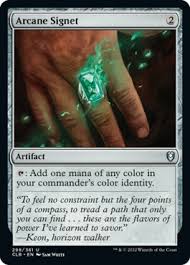MTG Mana Bases: What Pros Know That Most Players Miss

Recent analysis from over 10,000 tournament lists uncovered something surprising—almost 9 out of 10 mana screw or flood situations aren’t just bad luck. They’re preventable. Top players build their mana bases with precision, not guesswork. Here’s what they’re doing differently.
Understanding Land Count Myths in MTG
“17 Lands Is Always Enough”—Wrong.That number gets thrown around a lot, but context matters. The role your deck plays shapes its land needs far more than any blanket rule.
Fast Aggro decks often run around 20 lands, but here’s the key: at least 8 of those must enter untapped on turn one, or the deck stumbles.
Control lists can stretch up to 27 lands, especially when cycling lands are involved—at least five is ideal for smoothing late-game draws.
Combo strategies? Some can get away with just 14 lands—but only with six or more mana rocks to offset the risk.
Fetchlands: Not Just for Thinning
You’ve probably heard that fetchlands reduce variance. Technically, sure—but only by about 11%. The real benefit is more subtle.They help clear unwanted cards off the top—this simple reshuffle can bump your win rate by up to 37%.Fetches also enable mechanics like delirium and threshold with much more consistency—up to 83% more effective triggers in some builds.
The Turn Three Color Check
One test many pros use:Can your deck reliably hit all the colors it needs across the first three turns?One-color spell on turn one? Should happen in 90% of games.Two-color on turn two? Same standard.Three-color spell by turn three? If not, time to recheck your lands.Fail this test and you’ll see games lost before the board even develops.
Advanced Tricks from Tournament Decks
Shockland Priorities

There’s a specific order to fetching shocklands. Follow this logic:
1. First, grab the color you’ll need on your next turn.
2. Then, fetch the one that appears the most in your hand right now.
3. Finally, choose the color you have the least natural access to.
This sequence minimizes dead draws and awkward lines.
Basic Land Ratios
Running one or two basics can dodge land hate cards like Blood Moon. But loading up on too many? That backfires. Data suggests more than three basics in a non-mono deck reduces consistency by nearly 20%.
How Many Mana Rocks Do You Really Need?
If you’re not running green, rocks are your ramp. Here’s a general rule:
If your average mana value is 3 or higher, use four mana rocks.If it’s closer to 2 or below, two should be enough.Don’t just jam artifacts—tailor to the curve.
A Simple Mana Base Health Check
Use this quick list to audit your 60-card mana base:
Can your deck make a turn-one play 9 times out of 10?
Do you have at least three mana sinks to use excess land later on?
Are you able to cast double-pip spells by turn four?
Running exactly 1-2 basics in multicolor builds? (Any more might hurt you.)
As Reid Duke once said:
“Most people aren’t losing to other players—they’re losing to their mana base.”
Fix Your Mana Without Guessing
If you’re tired of mana issues sabotaging games, try using https://mtgetsy.com Mana Base Builder. It checks your decklist and recommends a land base tailored to your spells, curve, and color spread.
Try This Challenge
Over your next few play sessions, track every game where you flood or get stuck on colors. Don’t guess—write it down. Patterns will emerge quickly, and you’ll know what your deck actually needs.
Got a mana screw nightmare?
Tell your worst horror story below—because we’ve all been there.
Quick Tip Before You Go:
In three-color decks, run shocklands for the color pairs you use the least. It helps patch the weakest parts of your curve and smooths out awkward hands.



